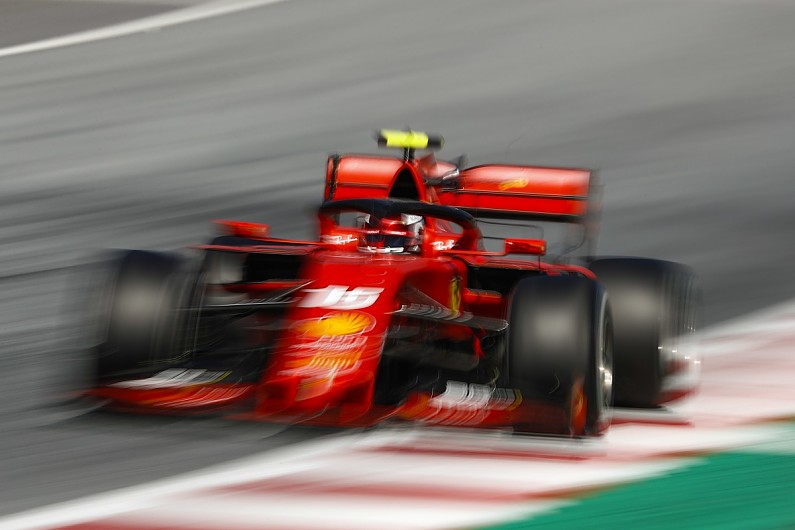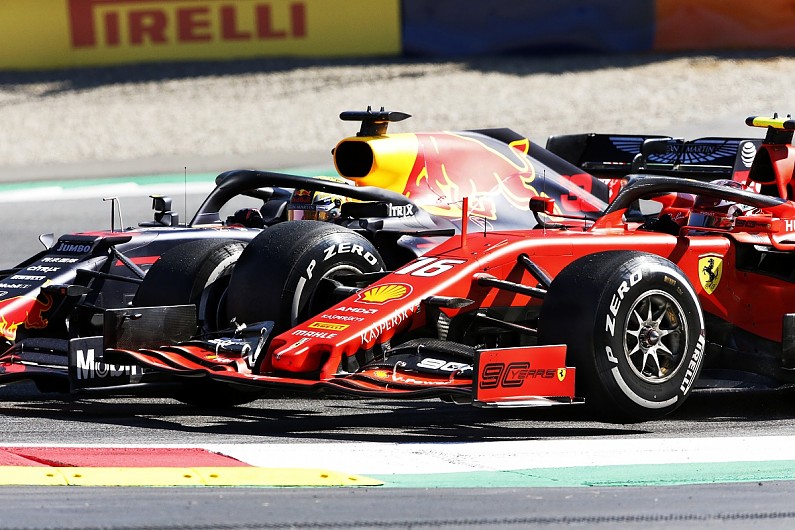Charles Leclerc was dealt a bitter defeat in the 2019 Austrian Grand Prix – streamed by Formula 1 today. But the bareknuckle aggression which cost him a debut win would ultimately sharpen his teeth for combat
By the end of the 2019 Formula 1 season, Charles Leclerc had answered all questions about his readiness to join Ferrari in just his second full year on the grid.
It was a season that saw Leclerc score two race wins and score four pole positions en route to soundly beating team-mate Sebastian Vettel in the standings. It earned Leclerc a new long-term Ferrari deal, as well as marking the end of the road for his four-time world champion team-mate at Maranello.
Leclerc would have won just his second race for Ferrari had it not been for a late engine issue in Bahrain. He took pole before winning an early fight against Vettel – who spun out while defending P2 from Lewis Hamilton – only to lose power with 10 laps to go and drop to third.
Leclerc’s start to the season was far from spotless, particularly in qualifying as a tendency to push too hard in the earlier sessions, notably in Baku when he crashed out in Q2. But he took lessons from it and changed his approach, going on to outqualify Vettel at nine consecutive races.
It showed an incredible level of maturity and self-reflection from Leclerc – but an even greater example came in his defeat to Max Verstappen in the final stages of last year’s Austrian Grand Prix. It would be the race that sharpened Leclerc’s teeth and, ultimately, turn him into a grand prix winner.
Ferrari emerged as the team to beat in Austria over one lap, with Leclerc leading from Vettel in Q2. An engine issue on Vettel’s car at the start of Q3 prevented him from setting a time in the session, paving the way for Leclerc to take pole by two-tenths of a second.
Leclerc’s advantage carried over into the race on a warm day in Spielberg as he cantered away from the chasing Mercedes of Valtteri Bottas and Lewis Hamilton through the opening stint. An anti-stall issue had caused Verstappen to drop all the way from second to eighth at the start, while Vettel sat a long way back from his team-mate as he clawed his way back up the order.
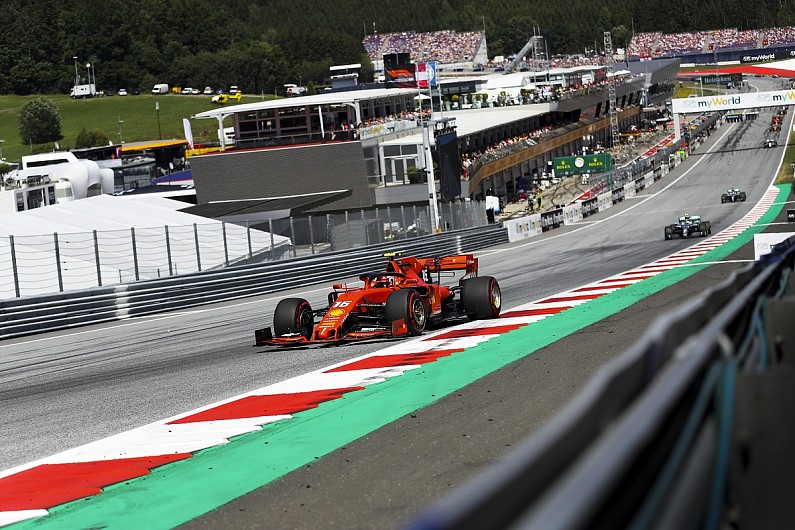
Mercedes tried to take a bite out of Leclerc’s five-second advantage by pitting Bottas from second at the end of lap 21, making him the first of the front-runners to come in. The push for the undercut was seen off swiftly by Ferrari, who responded in kind by bringing Leclerc in for his sole scheduled stop of the race one lap later. It was enough to keep Leclerc ahead of Bottas, only losing around a second of his advantage.
Without Vettel to support Leclerc at the front, Mercedes was able to split its strategies and run Hamilton longer than Bottas, giving him the advantage of fresher tyres for the second stint. The plan appeared to be working as Hamilton kept the gap to Leclerc fairly stable, putting the reigning world champion in the frame for a charge-and-pass run on fresher rubber.
But just before Hamilton was set to come in, he ran wide at the final corner which caused his Mercedes W10 car to pick up front wing damage across the kerbing, resulting in a loss of downforce. The team reacted immediately by bringing him in, but the need to change the front wing meant Hamilton dropped out of contention at the front.
Leclerc was left fuming by the move, exclaiming: “What the hell is that?” Verstappen’s response was swift. “He turned in on me,” he said, his engineer replying: “Mate, there was nothing wrong with that.”
Verstappen spent one lap leading before coming in for his stop, some nine laps after Leclerc had pitted, and emerged in fourth place. Leclerc had rebuilt his lead over Bottas to five seconds, with his pace even allowing him to grow his advantage over the Red Bull to 13 seconds at one stage.
The race began to move toward Verstappen as Leclerc’s tyres dropped off, allowing him to gain over a second per lap at one stage. Ferrari had moved Vettel onto a two-stop strategy after Verstappen eased clear of the German for third, but was committed to keeping Leclerc out.
Verstappen started to close on Bottas in second place with 15 laps to go, but reported he was losing power, flaring concerns for Red Bull. The Dutchman showed few signs of concern on-track as he dived up the inside of Bottas into Turn 3 for second, leaving just five seconds to make up to Leclerc at the front.
“This is game on,” was the hurry-up from the pit wall as Verstappen carved into Leclerc’s advantage, getting within DRS range with five laps to go. Leclerc was able to rebuff the advances initially, defending fairly with four laps to go when Verstappen tried another Turn 3 dive – but the Ferrari driver had less success the very next lap.
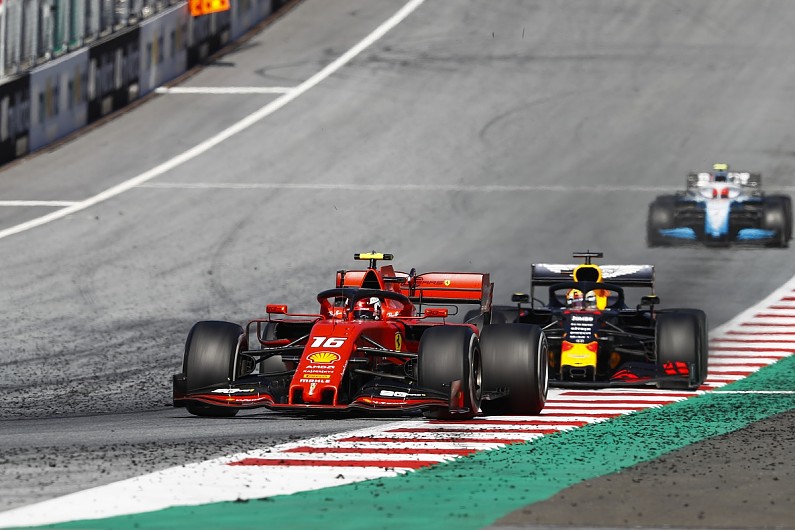
Verstappen got side-by-side with Leclerc and made an early switch to commit to the inside, but ran deep to try and force the Ferrari out wide as he turned in to make the corner. The two cars bumped wheels, spitting Leclerc onto the kerb and off-track as Verstappen grabbed the lead.
Leclerc was left fuming by the move, exclaiming: “What the hell is that?” Verstappen’s response was swift. “He turned in on me,” he said, his engineer replying: “Mate, there was nothing wrong with that.”
The stewards quickly announced they would be looking into the move, meaning as Verstappen crossed the line to score his first win of the season – and the first for Honda in F1 since 2006 – there was still an element of doubt.
Three long hours and one fake stewards document later (something that hoodwinked many a journalist who should know better), it was confirmed that no action would be taken. Verstappen was the winner, leaving Leclerc an agonising P2, three laps shy of his first F1 win.
By the next race at Silverstone, Leclerc had taken the defeat on the chin and found the silver lining. “There have been some other incidents in the past, which have been smaller in a way and that have been penalised,” he said. “If we can race that way, then I’m more than happy to race that way. I think it’s good for Formula 1, I think this is what us drivers want, but we just need to know what we can expect from the others.”
It was a hard lesson for Leclerc to learn in terms of what is and is not allowed in wheel-to-wheel battles, but one he took well. He became tougher in on-track battles, proof of that coming as early as the British Grand Prix when he again went wheel-to-wheel with Verstappen, this time coming out on top.
But the greater glory came at Monza, where he produced some aggressive defensive moves to keep Hamilton at bay and secure Ferrari’s first home victory for almost a decade. The most notable move came the Roggia Chicane, when Hamilton was squeezed on the outside of the corner by Leclerc in a move that prompted a warning from the stewards but no penalty.
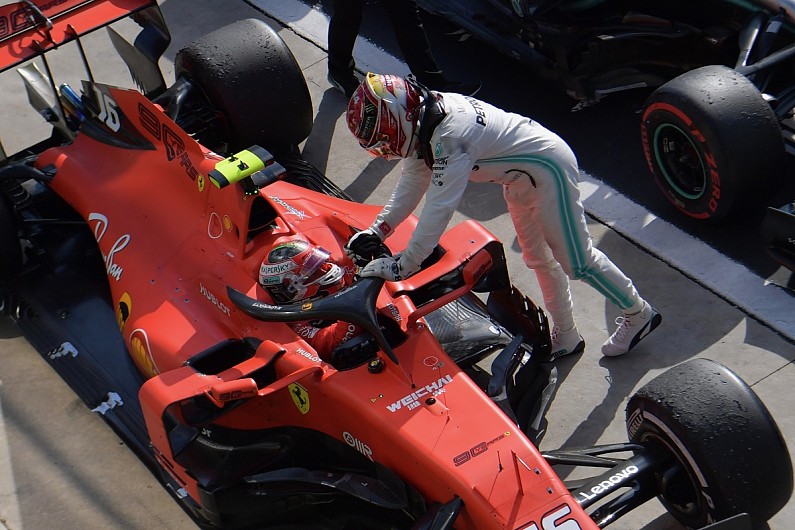
“Since Austria it’s clear we can go a bit further in the way we defend and overtake and just the aggressiveness of us drivers,” Leclerc said after the win.
“I believe that Austria helped me changed the approach and today it’s also thanks to this that I managed to win. It was obviously very on the limit, but I’m happy to race like this.”
Such development has been a hallmark of Leclerc’s early F1 career. As galling as the defeat to Verstappen in Austria may have been at the time, it was necessary for his growth.
It helped turn him into a driver capable of beating Lewis Hamilton in a wheel-to-wheel contest – quite the skill to have learned so early in his career.
